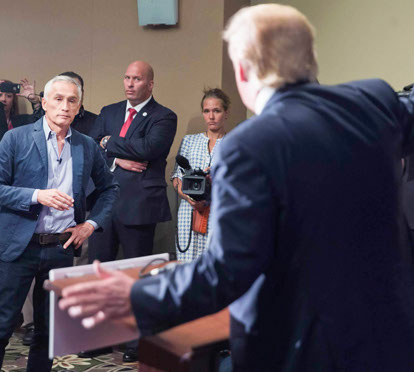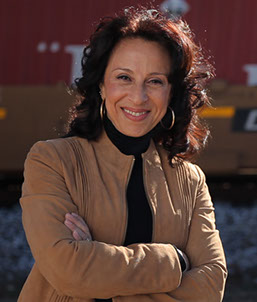


The state of Latino journalism is grim. We all know Latinos are the largest minority group in the U.S., at 17.4 percent of the population, but you wouldn’t know it by turning on the news or skimming bylines at any of the major media conglomerates.
By the latest estimates, in print newsrooms there has been only a 1 percent increase, and in broadcast newsrooms only a 3 percent increase, in Latino journalists in 30 years. In real numbers, this means that in 2015 there are, by the American Society of News Editors’ latest count, a scant 1,377 Hispanics in U.S. newsrooms – a net loss of 721 Latino journalists since 2002.
After decades of trying to ensure representation for and in-depth coverage of the fastest growing segment of the U.S. population, how can this be?
population, how can this be?
“I think the reason we’re still talking about this is because very little has changed since the 1980’s,” said Russell Contreras, a reporter for the Associated Press and president of UNITY: Journalists for Diversity. “And what gains were made were impacted by the contraction of the news business this last decade. Quite frankly, the people who were in charge of those diversity programs were kicked out of the business themselves and a lot of us have become orphans of a sort because we’ve lost our mentors.”
These losses, their lack of replacements, and a system where, often, the newest, most diverse, young journalists are the first to lose their jobs in layoffs, contribute to a dearth of access to insight about a diverse, multi-generational Latino community that is increasingly geographically dispersed and likelier-than-not to consume their news in English.
“The problem is that when there are none of us in the newsroom, it affects all coverage, not just coverage of issues specific to Latinos,” said Contreras. “When Ted Kennedy died, the newsroom huddled to discuss what stories to tell – ‘What are we losing?’ ‘What did he do?’ ‘What is his legacy?’ I brought up his role in the passage of the 1965 Immigration and Nationality Act and the editor said, ‘That’s a great idea, I never thought of that.’ But it was something I could add because of my background. Had I not been there, who knows, that story may never been done.”
“I’m not saying that all of us can walk in with a tremendous story,” Contreras said, “but it is important to have us at strategically placed locations because without us, readers might not get the actual narrative of a changing American experience.”
Still, the numbers – as bad as they are – don’t tell the whole story.
“As I get older and older I take a longer view on this issue because I remember a time when things were even worse than they are today. You’d look on TV or news, and especially the newspaper, and you wouldn’t see any Latinos at all,” said Angelo Falcon, a political scientist and a co-founder of the National Institute for Latino Policy, which he has directed since its start in 1982. “Today I see a smattering but there is some progress even if it is happening at a snail’s pace. But this isn’t limited to journalism – our population is growing so quickly yet development of this community is not keeping up.”
Falcon noted that Latinos are also underrepresented in government and the private sector – incredibly, advocacy organizations are still fighting to have Latinos included and broken out in basic social sciences research. Yet, he attributes some of this inability to coalesce around key issues to a fundamental challenge facing such a diverse community.
“There are constant tensions and struggles within our own community because we’re talking about people from 21 different countries, at least, plus a real generational diversity,” said Falcon. “It’s a very ambiguous and tricky relationship with society because some of us can say we were here before there even was a U.S. and then there are groups who have come to this country very recently.”
Falcon compares this to the relative success African-Americans have had in being able to come together to demand changes.“When it was decided that the new term would be ‘African-American,’ Jesse Jackson and other activists held a press conference and said, ‘this is the new term’ and that was it,” he said. “You look at our community and to this day there’s division over whether we have an ethnic or racial identity, whether it is ‘Latino’ or ‘Hispanic’ – we’re still at that very basic level.”
“This plays itself out in many issues, for instance criminal justice is a straightforward issue for African-Americans whereas with Latinos it’s complex,” said Falcon. “Latinos suffer from the general issues related to the trend of mass incarceration but then there’s also the issue of immigrant detention and on and on. These differences, in addition to the issue of legal status, affect how organized our community can be around any given problem, much less on a problem that is being driven, at least in part, by a contracting media landscape.”
As if that weren’t thorny enough, there’s also infighting (the drama at the National Association of Hispanic Journalists is, at this point, legendary), jealousies, controversy and other nastiness that leaves Latino journalists in a position where they are taken less seriously by mainstream media outlets.
As bad as that is, it’s even more harmful when Latino journalists turn on each other. Perhaps the best example of this is the memorable encounter beween Jorge Ramos and Donald Trump.
Near the end of August, at a press conference in Iowa, Ramos insisted Republican candidate Trump elaborate on his plan to deport all undocumented immigrants. Trump’s security team physically removed the beloved journalist while Trump gleefully suggested to Ramos, a U.S. Citizen born in Mexico City, that he “Go back to Univision” – a thinly-veiled slam meant to elicit the common refrain among nativists that all Latino immigrants should “go back to Mexico.”
Though many Latinos on social media sided with Ramos, who hosts news shows in Spanish and English on the Univision and Fusion Networks, respectively, few fellow journalists came forward to decry his shabby treatment at the press conference.
“We should be appalled that when he was kicked out, no one else was left to ask that question and none of Ramos’ white colleagues took up the mantle and pressed Trump on that question,” said Contreras.
In fact, when reporting on the incident, most mainstream media outlets took a demeaning “Since no one knows who Jorge Ramos is, we’ll explain it to you” angle rather than focusing on the fact that Trump refused to answer a reporter’s question during an open news conference.
Worse, others turned the issue on its head by suggesting that Ramos shouldn’t have even been allowed to be in the press conference where he caused the commotion. Syndicated columnist Ruben Navarrette put it plainly: “Donald Trump insists he’s no politician. Now, after what happened at a dramatic news conference in Iowa, we know that Jorge Ramos is no journalist. At least not a real one.”
Navarrette continued: “Ramos is also an egomaniac who loves the sound of his own voice just as much as Trump adores his.”Though he correctly identifies Ramos as having an advocacy agenda – a criticism Ramos has never shrunk from – it’s hard to argue that the eight-time Emmy Award winner, who is frequently referred to as the “Walter Cronkite of Latino America,” is any less a journalist than other news outlet representatives who openly share their opinions.
Personality-driven backbiting aside, more important is the issue of whether Latino journalists who have made it to mainstream media outlets are seen by non-Hispanic editors and management as capable of reporting on the nation as a whole or whether they’ll be marginalized by being asked to focus only on so-called “Latino issues.”
In mid-October, the internets were abuzz with complaints about CNN’s showing during the Democratic presidential debate. As Richard Prince, who writes the “Journalisms” column for the Robert C. Maynard Institute for Journalism Education, put it: “While many analysts were declaring which Democratic candidates fared best or worst in Tuesday night’s Democratic presidential debate, others were wondering whether the black and Latino reporters permitted to ask questions were being stereotyped.”
He noted the prominent headlines after the debate: “Where were CNN’s black and Latino debate moderators all night?” “Why did CNN have Don Lemon ask about race and Juan Carlos Lopez ask about immigration?’ “Debate’s only Latino moment brought to you by a Latino — insulting? “
“I don’t think there’s anything inherently wrong if a person who happens to have a certain background wants to pursue those topics, but it’s really about whether you choose to focus there or whether you’re expected to by editors or management,” said Tanzina Vega, a reporter for CNN who until recently was at the New York Times.
Vega said there should never be any question about Latino journalists’ abilities outside the realm of their personal cultural experience. “First and foremost we are journalists – period. There are those of us, including me, who want to explore race and ethnicity, but, for instance, when I was at The Times, I was not limited to Latinos,” she said. “But the problem is that there are folks who feel limited and are seen as the default expert on immigration, when that’s not always the case – you may be a Latino who’s not at all interested in immigration.”
The real challenge to combatting the possible marginalization of journalists, Vega says, is the lack of a pathways for journalists of color to not only persist in newsrooms, but to get to management and senior leadership positions where they could have the agency to advocate for younger journalists.
Maria Hinojosa, a veteran journalist who produces the award-winning LatinoUSA radio show and podcast through her own production company, the Futuro Media Group, says much the same thing: “We have to realize that a lot of the decision makers, the distributors and the gatekeepers may be from a generation who consistently want to see us inside one small box. So if there’s no one at an organization to champion those journalists of color, and there are no editors to ensure that they’re not fielding silly inquiries or ridiculous editorial requests, and no allies who realize the importance of really understanding the community…it’s difficult to see a change.
 “We need diversity at every level at these mainstream organizations. For instance, when I get interviewed for an on-air hit, the producers and the bookers are young people, more entry-level people,” said Hinojosa, who has been on Meet The Press several times – a wonder, considering that Media Matters for America recently found that Latinos made up just 4 percent of guests in the first few months of 2015, a drop of 42 percent from the last few months of 2014.
“We need diversity at every level at these mainstream organizations. For instance, when I get interviewed for an on-air hit, the producers and the bookers are young people, more entry-level people,” said Hinojosa, who has been on Meet The Press several times – a wonder, considering that Media Matters for America recently found that Latinos made up just 4 percent of guests in the first few months of 2015, a drop of 42 percent from the last few months of 2014.
“One of the reasons more Latinos are not being called to be at the table on these shows is that the people who book experts for these shows don’t know who’s out there, who to call. And, frankly, they really need to be better journalists because we’re there,” said Hinojosa, who says she makes it a point to take younger staff members with her when she makes these high-stakes appearances in order to demystify the process and get them introduced to potential peers at larger organizations.
While there are many factors that will have to come into play in order to ensure that more talented Latinos go into, and stay in, journalism – better journalism training programs in institutions that serve large Latino populations, more internship and entry-level job opportunities for Hispanic recent grads and a pipeline to management – more progress will come down to enlightening the perception of Hispanics.
“The other day I was in my newsroom with my staff and we were all talking about how much we love Time magazine,” said Hinojosa. “I told them that my father is a Mexican immigrant and ever since he got to the U.S. it has been his favorite magazine. Everyone was chiming in about their experiences and there we were all these different people from different backgrounds and different generations sharing their love for this core piece of American journalism.
“I don’t know if the senior editors of Time know that they have this faithful Latino audience, but it would be nice for our partners in mainstream media to understand that we are American consumers and critical consumers,” said Hinojosa, “and when they include us, it only intensifies our connection to their brand.”
The perception gap may actually be an opportunity in disguise – one that Latino audiences and consumers can have an impact on through the traditional channels of writing letters to network or newsroom editors and ombudsmen, but also through social media.
“At the end of the day, what matters is who’s watching, who’s advocating, who’s reading and who’s clicking,” said Vega. “Metrics drive everything these days and when topics that are important to Latino audiences get engagement and response and becomes popular then editors look at the numbers and say ‘Oh, wait, look – this is something that’s working.”
“Just look at the success of Shonda Rhimes and her hit shows ‘Scandal’ and ‘How To Get Away With Murder,’” said Vega. “People spoke with their tweets and people pushed this show into the limelight for mainstream audiences. That success was propelled by black and brown Twitter users and they helped continue the momentum. Ultimately the studio paid attention and realized they had a live, consistent, and very engaged audience. That shows you the power of the audience to tell the powers that be what we like. We’ve got to do the same thing with the news media and tell them what we want and what we like.”
By Esther J. Cepeda